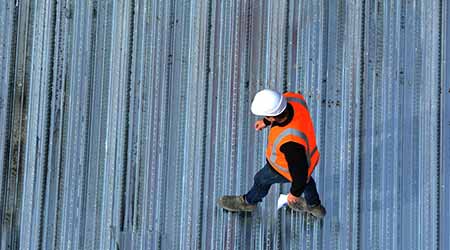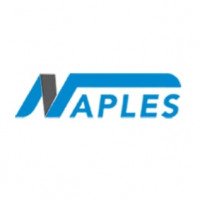What to Look for When Inspecting a Commercial Roof

Strong 8k brings an ultra-HD IPTV experience to your living room and your pocket.
A strong roof protects your property, people, and profits. Whether you manage a small store or a large facility, regular inspections are essential. If you're in a location like Florida, hiring professionals experienced in commercial roofing Naples can make all the difference. However, you must also know what to check yourself during an inspection. This blog highlights what to look for when inspecting a commercial roof and how to keep it in top shape.
Why Commercial Roof Inspections Matter
A commercial roof faces constant exposure to weather, debris, and wear. Inspections help spot small problems before they become expensive repairs. Routine checks ensure safety and extend the roof’s lifespan. They also help you meet insurance and legal requirements. With early detection, you can prevent costly shutdowns or safety hazards that hurt your business.
Key Areas to Check During a Commercial Roof Inspection
1. Check for Standing Water
Standing water can damage the roof over time.
Drainage issues: Blocked drains cause water to pool.
Water should flow easily to drains and gutters. Clear any blockages right away.
Roof slope problems: Flat roofs should still have a slight slope.
A good slope guides water to drainage points. If not, water collects and causes leaks.
Even a small puddle can seep through seams or worn spots, causing mold and structural decay underneath.
2. Inspect the Roof Membrane
The roof membrane is your first line of defense.
Cracks or bubbles: These are signs of damage.
They often point to trapped moisture or sun damage. Fix them to prevent leaks.
Punctures or tears: Look for sharp objects or foot traffic damage.
Seal or patch tears quickly to avoid further harm.
Walkways or safety pads can help reduce membrane damage in high-traffic areas.
3. Examine Flashing and Seals
Flashing protects the roof edges and joints.
Loose flashing: High winds can lift or shift it.
Loose flashing allows water to enter the building. Secure it immediately.
Deteriorated sealant: Over time, sealants crack or dry out.
Replace old sealant to stop leaks at seams and penetrations.
Check metal flashing for rust and corrosion, especially in coastal areas.
4. Check Roof Penetrations
These include vents, pipes, and HVAC units.
Damaged surrounds: Water can leak around poorly sealed openings.
Inspect for gaps or worn rubber gaskets. Replace as needed.
Structural damage: Heavy units can strain the roof.
Ensure proper support and no signs of sagging or cracks.
All penetrations should be flashed correctly and inspected after storms or major weather events.
5. Look for Signs of Mold or Algae
Mold or algae growth suggests water issues.
Green or black patches: These may appear on flat surfaces.
Clean the area and find the source of moisture.
Odors or stains inside: Interior issues may reflect roof damage.
Musty smells or ceiling stains can signal roof leaks.
Algae can also make the surface slippery and unsafe for maintenance workers.
6. Inspect Roof Edges and Gutters
Edges and gutters play a key role in drainage.
Clogged gutters: Leaves and dirt can block water flow.
Clean them regularly to prevent overflow or rot.
Edge damage: Look for rust, bends, or missing parts.
These can weaken the roof and cause structural damage.
Debris buildup also attracts pests that can damage roof materials.
7. Review Roof History and Maintenance Records
Know your roof’s past for better care.
Past repairs: Understand previous issues.
This helps predict future needs and plan maintenance.
Inspection frequency: Follow a schedule.
Most experts recommend checking the roof twice a year.
Combine visual checks with thermal imaging for deeper insights into trapped moisture.
When to Call a Professional
Even with a good eye, you may miss something. A commercial roof inspector uses tools and expertise to detect hidden issues. If you find major damage or are unsure about any area, bring in a pro. Trained inspectors provide detailed reports and help create a repair plan. This ensures all problems are documented and properly addressed.
How Regular Roofing Services Help
Reliable roofing services in USA offer more than just repairs. Many provide full inspections, maintenance plans, and emergency response. Partnering with a trusted service provider ensures your commercial roof stays strong year-round. They can also help manage warranties and comply with local building codes.
Conclusion
A commercial roof inspector and a proper roof inspection protect your investment and keep your building safe. From checking drainage to spotting mold, every detail matters. Don’t wait until it’s too late—schedule regular checks and take action fast. If you're looking for expert support, especially in areas like commercial roofing in Naples, choose a team that puts your needs first. Regular care today saves money and stress tomorrow.
Note: IndiBlogHub features both user-submitted and editorial content. We do not verify third-party contributions. Read our Disclaimer and Privacy Policyfor details.


